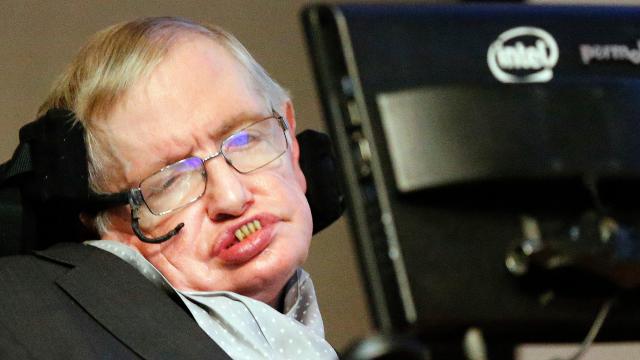Stephen Hawking may have passed away in March, but his final work has now been published in a scientific journal.
Stephen Hawking. Photo: AP
The paper, “A Smooth Exit from Eternal Inflation?”, was recently published by the Journal of High Energy Physics. The paper first went online as a preprint last year, and there isn’t much new between the versions – just confidence from a set of reviewers that the paper is worthy of publication.
The paper deals with the nature of the cosmos. Many scientists hypothesise that immediately after the big bang occurred, the universe expanded at faster-than-light speed like a balloon, through the process of inflation. The teeniest, random energy fluctuations of quantum mechanics could have been magnified into clumps and voids, creating the large-scale structure of the universe.
Some think that perhaps there are places where inflation continues, and in between stable pockets of non-inflating space (such as our own universe) exist. Each of these bubbles would then be single universes in a grander, ever-inflating multiverse.
Hawking and his collaborator Thomas Hertog from the University of Leuven in Belgium didn’t like the infinite unpredictability of a multiverse. So they created a simplified model of this behaviour and a mathematical approach that could severely constrain the number of possible multiverses. What would be left over is universes with physics similar to ours.
“This raises doubt about the widespread idea that eternal inflation produces a highly irregular universe with a mosaic structure of bubble like patches separated by inflationary domains,” they wrote.
Since it was Hawking’s last paper and dealt with some pretty heady stuff, non-physicists thought it was a very big deal. Physicists generally disagreed. Theoretical physicist and science blogger Sabine Hossenfelder reiterated that Hawking was a beloved physicist and a great man, but called the paper “utterly unremarkable”.
Her problem with it: It’s just another theoretical paper without a physically distinct way to test its conclusions or predictions.
Others were a little softer on the paper, as we previously reported. It’s speculative, and Hawking and Hertog themselves mention that it requires more development.
This might sound disappointing, but it’s just how theoretical physics works. Theoretical physicists use maths to answer some of the grandest questions in the universe. They generate new ideas hoping that some will stick and offer predictions that experiments can test. The testability of these theories is an important point that has continued to generate controversy in the physics world.
Very few theoretical physics papers are the next Theory of General Relativity. Many are just new approaches to thinking about the existing problems. You shouldn’t leave thinking that Hawking’s last paper was a dud – or that it was a big deal. Instead, just know that into the last year of his life, Hawking was continuing to do his day job: Trying to understand how the universe works.
